Biennial visit with children includes dialogue with art and nature
How does one explore contemporary art and prepare for an island visit with children? Helsinki Biennial’s producer of education, Pinja Petäjä, suggests works to observe with children at Helsinki Biennial 2023 on Vallisaari Island.
“Art is an adventure. You only need curiosity and cooperation of all senses,” says Helsinki Biennial’s producer of education Pinja Petäjä. “Artists are often the ones that take a closer look at things that would otherwise go unnoticed. The works at Helsinki Biennial 2023 invite us to look closely and carefully.”
The 16 works on Vallisaari are specially made for their surrounding environment in dialogue with nature. The route presented in this article is only a suggestion, and everyone can modify their biennial visit as they wish.
“Contemporary art is created in our time and deals with issues we are living with,” Petäjä says. To explore contemporary art with children, Petäjä suggests easy questions like “what is going on in this work?” or “why was this work created?”
“Everyone sees the world in their own way. Among art, our memories and experiences are involved in the discussion. Additionally, a small child could bring a toy with them and show the artworks to it.”

Pinja’s suggestion for a biennial tour with children
Start your Vallisaari visit by using the map at Luotsipiha’s information desk and determine together your current location and how to find the route and artworks from the map. Then you can discover the map’s numbered circles along the route.
“My kids were wondering why the island is called Vallisaari (‘Embankment Island’), which led us to talk about the island’s history. Embankment is a hill-like structure. Earlier, the island was in military use for a long time. Before that, the island was called Lampisaari (‘Pond Island’) because seafarers went there for fresh water.”

© HAM/Helsinki Biennial/Sonja Hyytiäinen
9 Adrián Villar Rojas: From the Series The End of Imagination, 2023
You can start your biennial tour by viewing Adrián Villar Rojas’s sculptures. You will find 15 of them along the 3-kilometre-long route. The children can be encouraged to observe the surroundings with extra-sharp eyes and to make pretend binoculars with their hands. You could also make binoculars from toilet paper rolls in advance at home.
When searching for the sculptures, remember that it’s important to stay on the marked paths. When viewing the works, you may ask the children, “what do you think of this?” and “can you find familiar forms from the sculptures?” The children can also be asked to copy the sculpture’s shape alone or together.
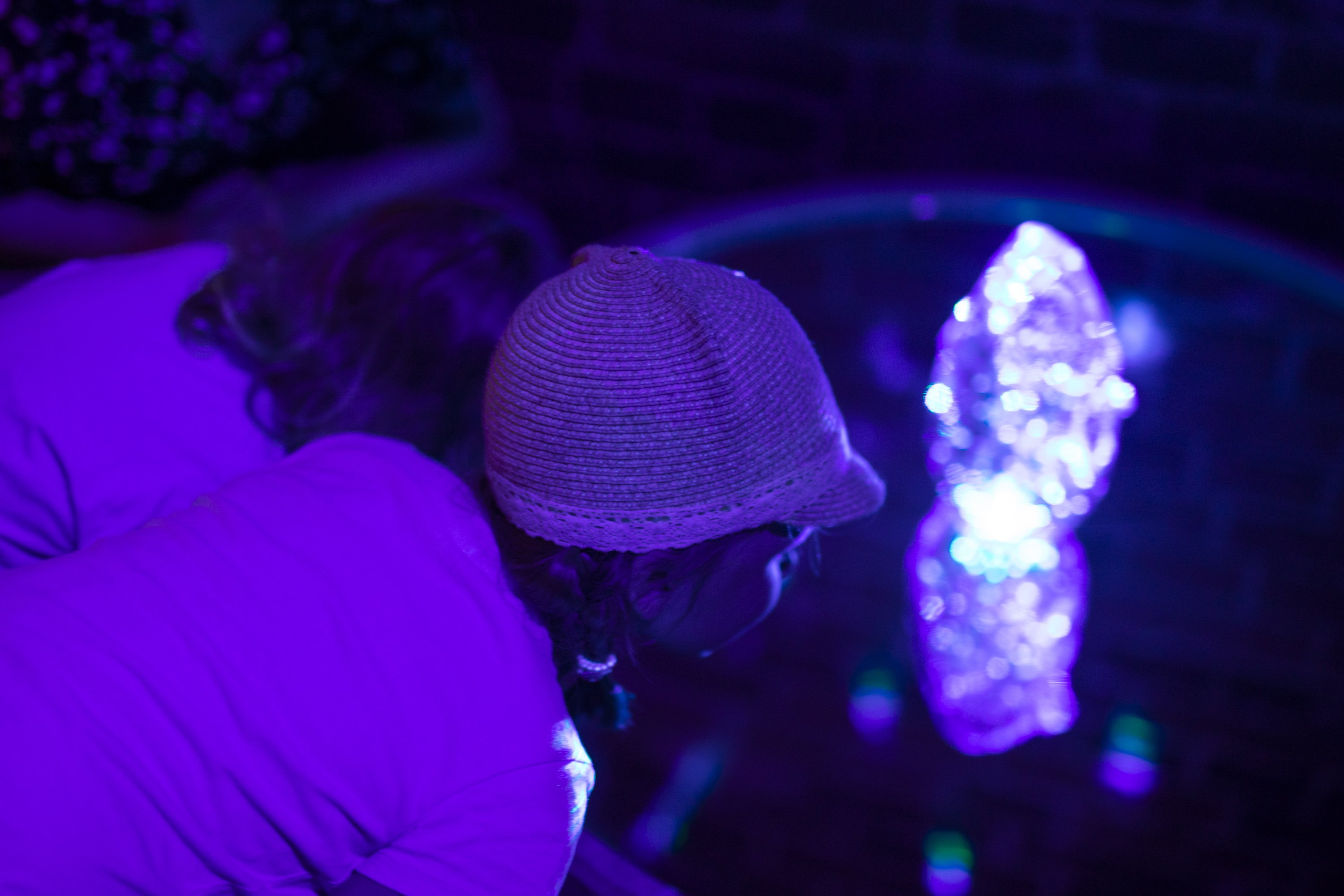
© HAM/Helsinki Biennial/Sonja Hyytiäinen
10 Emilija Škarnulytė: Hypoxia, 2023
In Emilija Škarnulytė’s installation, we get to dive to the bottom of the sea. The installation features glass sculptures placed on a mirror surface, which the artist interprets as the sea’s tears. In particular, the reflections on the mirror surface invite the viewer to look closer. You can also admire your reflection from the mirror. It’s good to note that the work is located in an old gunpowder cellar, which is a dark space. The work also includes loud sounds.
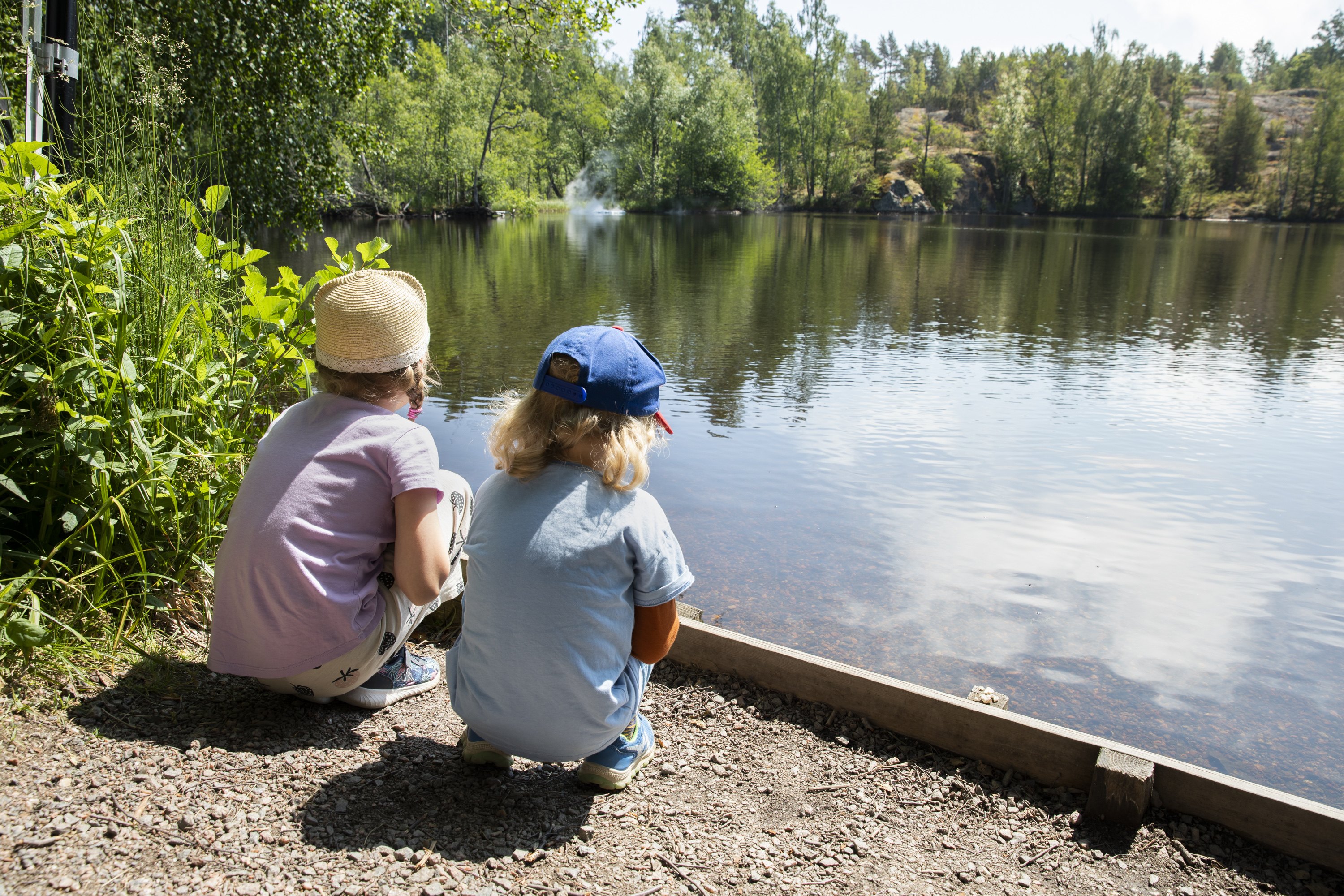
© HAM/Helsinki Biennial/Sonja Hyytiäinen
12 Remedies (Sasha Huber & Petri Saarikko): Sanctuary, mist, 2023
Beside the pond, go to the water’s edge. There you can, depending on the weather, observe mysterious mist floating on the water surface. You may not see the work right away as the mist is constantly changing shape. In addition to viewing the work itself, the children may observe the pond and its life, such as crayfish.
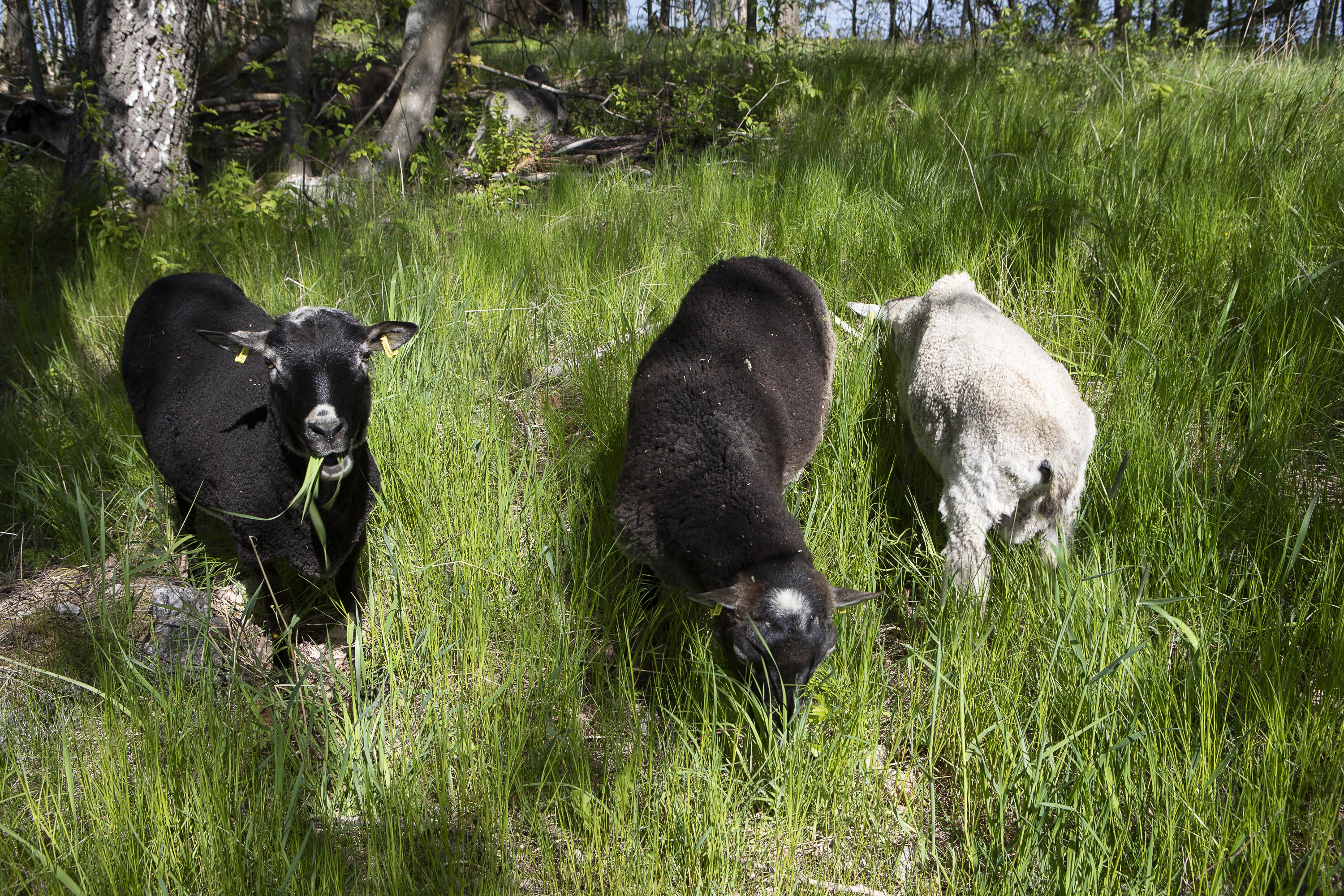
© HAM/Helsinki Biennial/Kirsi Halkola
Island residents
After visiting the pond, there is a possibility to see the island’s nine new residents: Åland sheep rams. However, sometimes these horned residents like to hide from the island visitors’ gaze.
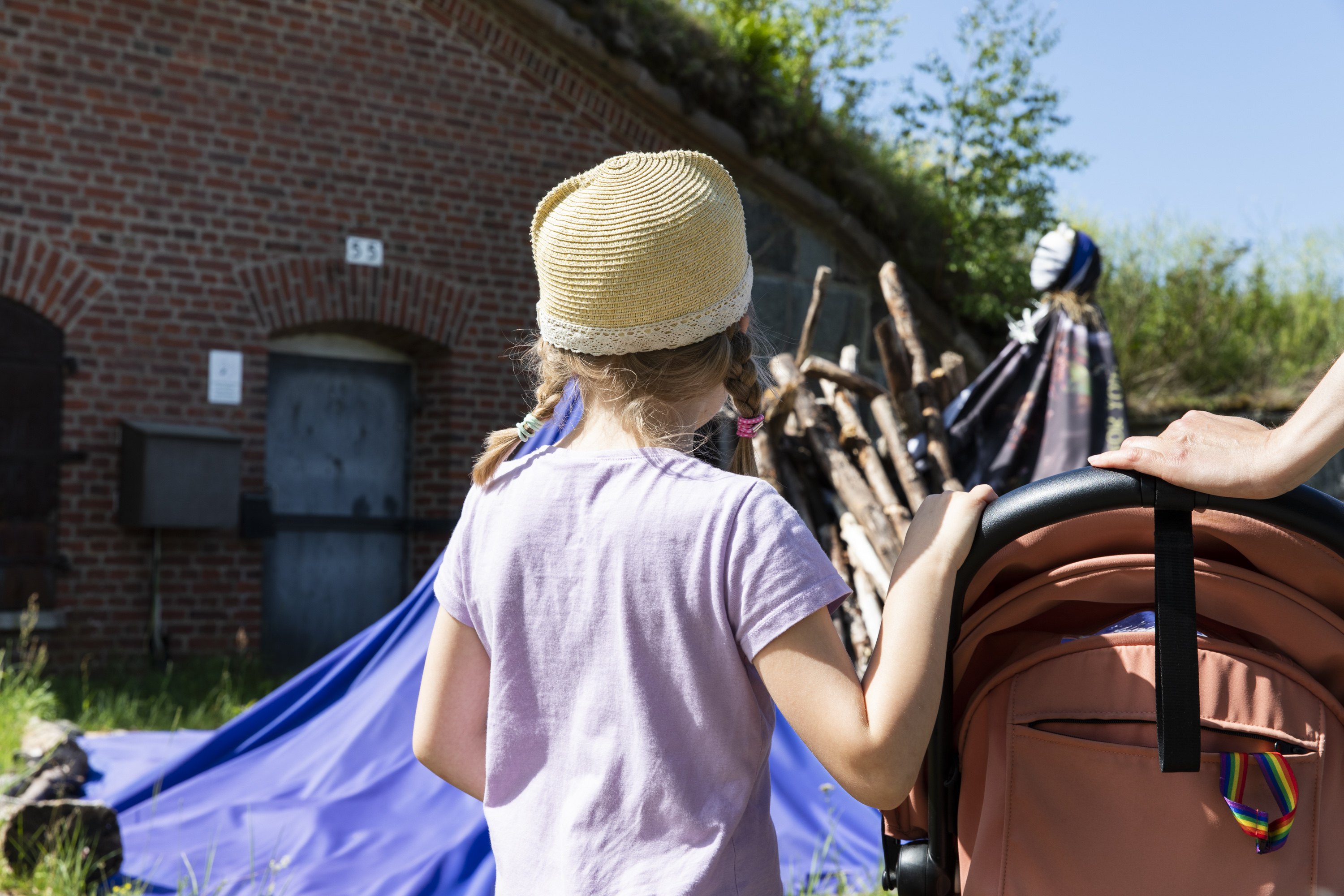
© HAM/Helsinki Biennial/Sonja Hyytiäinen
16 Danielle Brathwaite-Shirley: Thou Shall Not Assume, 2023
You will find Danielle Brathwaite-Shirley’s large, human-like characters wrapped in fabrics in five spots along the route. The characters peering from the foundation by the picnic meadow may particularly interest the children. The artist likes to imagine new residents and stories of Vallisaari. Beside the works, you may contemplate together who the characters are, where they are from, and where they are going.
Snack break
You will find a nice picnic meadow with tables near Brathwaite-Shirley’s works. The roofs provide shelter from the heat or rain.
There are also many cafés and restaurants on the island.
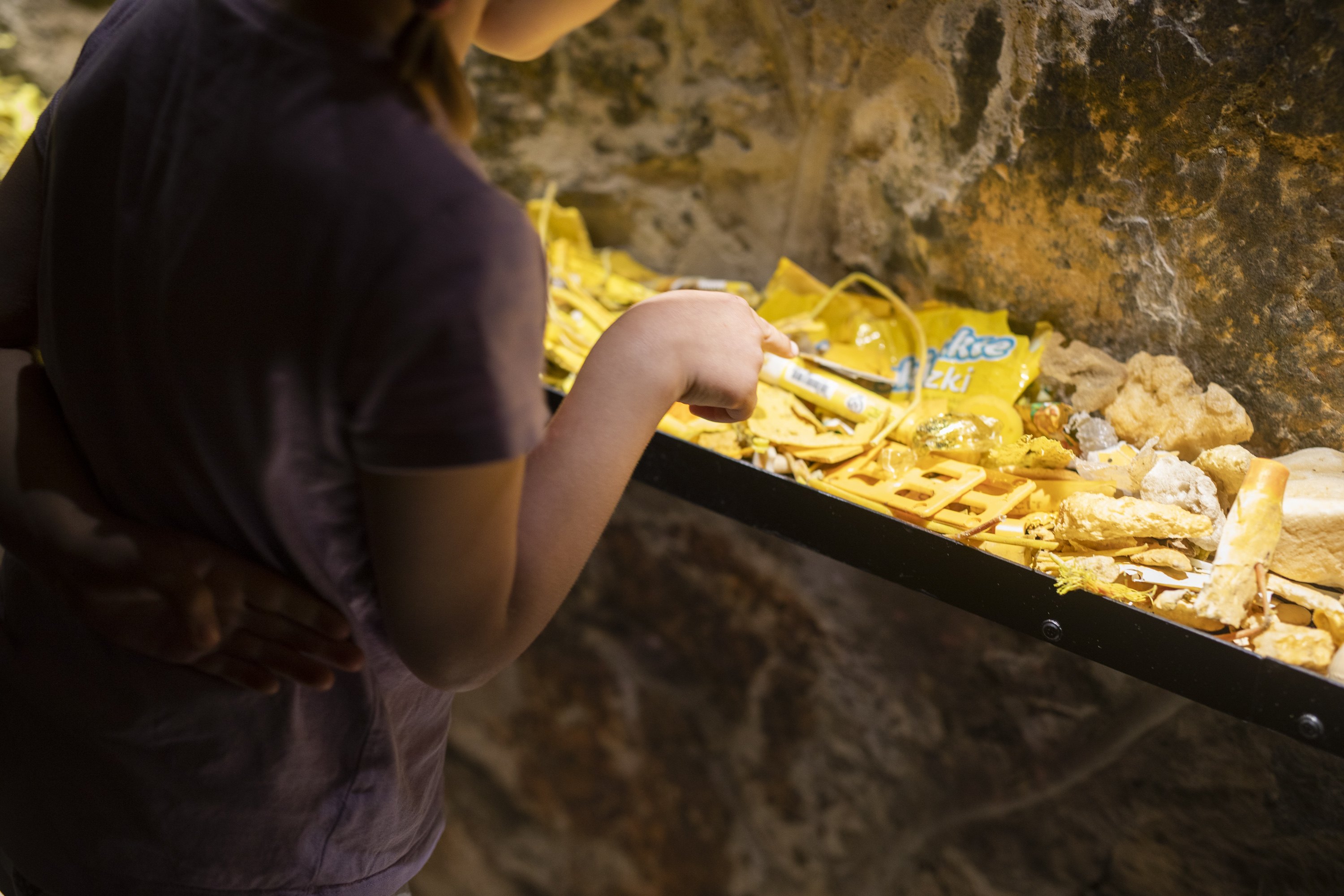
© HAM/Helsinki Biennial/Sonja Hyytiäinen
17 Tuula Närhinen: The Plastic Horizon, 2019–2023
It is well worth familiarising yourself with Tuula Närhinen and Jenna Sutela’s works with the children. Prepare to queue for the works located indoors. It’s important that the children are accompanied by adults when visiting indoor artworks, and that artworks can’t be touched unless otherwise stated.
Tuula Närhinen’s installation consists of plastic trash the artist collected on Harakka Island by the Helsinki shoreline. You may recognise everyday items from your own life in the work. You can discuss with the children how the trash ended up in nature. After the biennial visit, you can challenge the whole family to pick up trash.
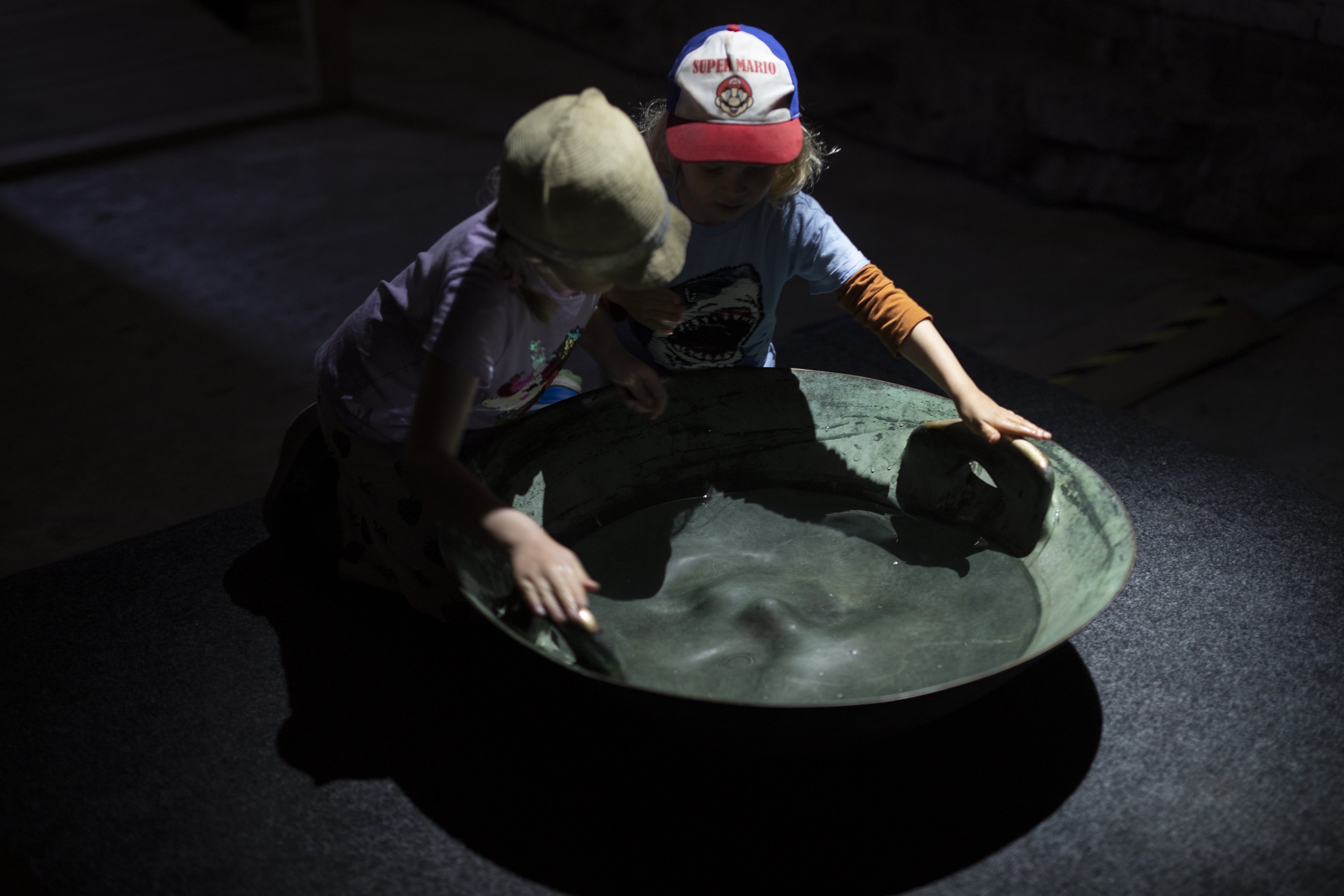
© HAM/Helsinki Biennial/Sonja Hyytiäinen
18 Jenna Sutela: Pond Brain, 2023
Jenna Sutela’s work is a face-shaped bronze bowl filled with water. You are free to touch this work of art! Put your hands into the water and rub the bowl’s ear-like parts to see what happens: the work reacts to touch.

© HAM/Helsinki Biennial/Sonja Hyytiäinen
Observation deck
Next, you will reach the spectacular Alexander Battery observation deck. Here, it is nice to observe the city from across the sea as well as the island’s other pond. Another observation deck is located in Kustaanmiekka.
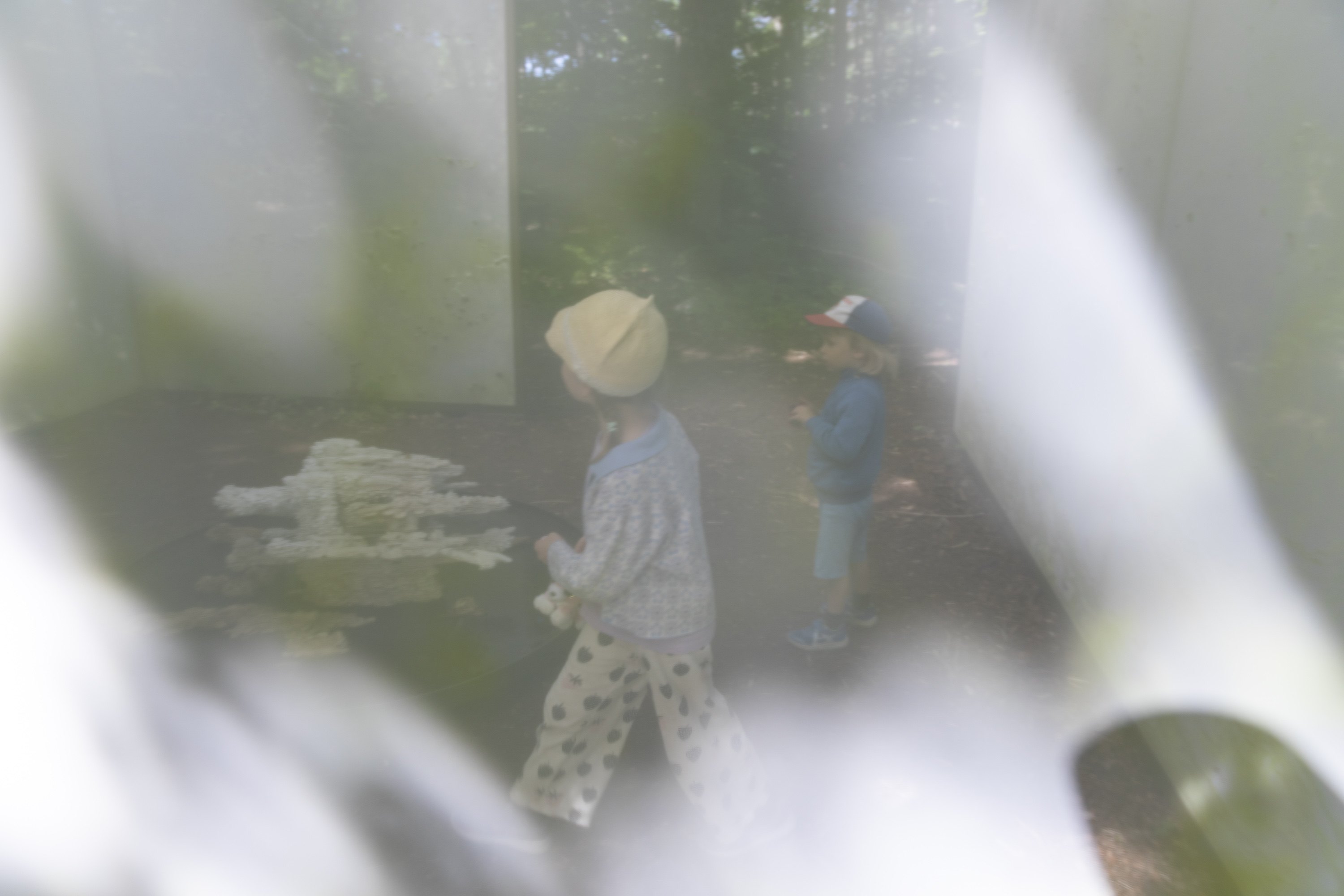
© HAM/Helsinki Biennial/Sonja Hyytiäinen
20 Alma Heikkilä: coadapted with, 2023
Alma Heikkilä has put a lot of thought into the work’s location. A plaster sculpture is enclosed within transparent canvases. There is a hole in the canvas roof from which water drips on the sculpture. Below the work is a dish for dye made from plants. The work changes when it gets wet. It combines human-made elements with those created by nature. You may observe and identify the bugs attached to the canvas. It is also worth taking a look at the nature surrounding the work.
After visiting Alma Heikkilä’s work, you can continue your journey on the path shaded by trees; from there you can observe nature and more of Adrián Villar Rojas’s sculptures.

© HAM/Helsinki Biennial/Sonja Hyytiäinen
21 Lotta Petronella sekä Lau Nau & Sami Tallberg: Materia Medica of Islands, 2023
You will find this work inside an old fire station building. The work is strongly connected with Vallisaari and its moths. The island is home to thousands of butterfly species because its natural conditions are exceptionally well suited for them. Observe the work’s details with the children. For example, the ceiling light shades have been dyed with lingonberries. You may close your eyes inside the building, listen to the work’s sounds, calm down, and just think how it feels.

© HAM/Helsinki Biennial/Sonja Hyytiäinen
22 Suzanne Treister: TECHNOSHAMANIC SYSTEMS New Cosmological Models for Survival, 2020–21
Suzanne Treister’s work is located in a rambling wooden cottage wherein you will find 185 watercolour paintings. The space itself is inspiring for children. The colours and details in the paintings invite the viewer to inspect them closer. In these A4-sized paintings, you will find forms that tickle your imagination. With the children, you can discuss why the artist decided to portray extra-terrestrial life. You may also ask the children which place depicted in the paintings they would like to move to.
ISLAND CHECKLIST:
- Bring along snacks and, depending on the child’s age, a buggy.
- There are also many cafés and restaurants on the island. More information here.
- Several buggies fit on the ferry, but please note that you may need to wait for the next ferry when it is busy.
- Remember to bring a water bottle and to fill it before the tour.
- Please note that eating your own snacks is not allowed on the ferry.
- You can fill your bottle at the water points near Luotsilaituri and in Torpedolahti.
Text: Reetta Haarajoki & Pinja Petäjä (translated by Elävä Kieli)
